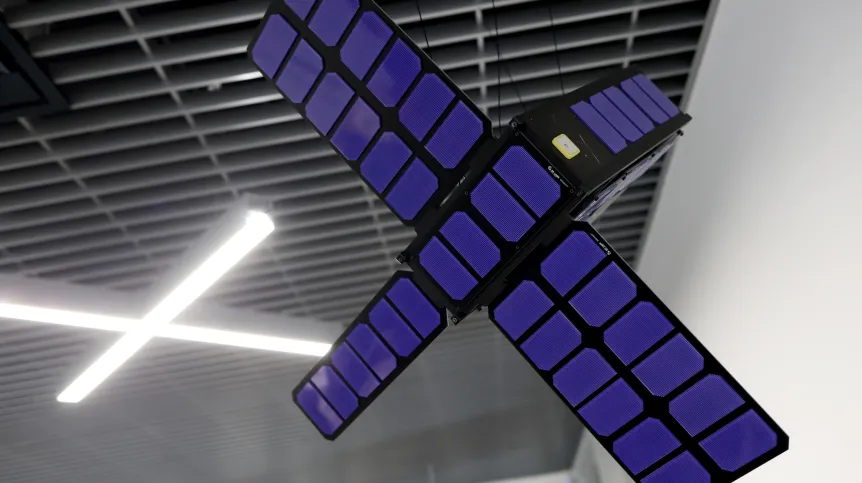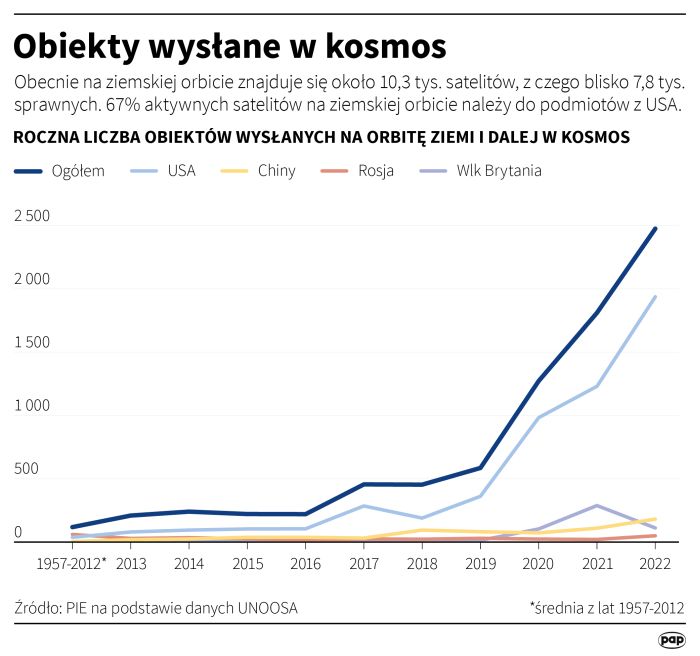
Polish satellites including the Intuition-1 satellite built in Gliwice and the STORK-7 observation satellite were launched into space Saturday evening on board the Falcon 9 rocket.
In the Transporter-9 mission, the SpaceX Falcon 9 rocket carries a total of 90 satellites into orbit for various customers from around the world, including several satellites built in Poland or with Polish participation.
This mission also puts several dozen microsatellites into orbit. Among them, in addition to the satellite built in Gliwice, is the Polish observation satellite STORK-7, equipped with 28 perovskite solar cells from Saule Technologies. The Wrocław-based company SatRev is responsible for the construction, software, launch and operation of this satellite.
Saturday's launch took place at the American Vandenberg Air Force Base in California. It was previously announced that the Falcon 9 launch was scheduled for 7:47 PM Polish time on Thursday, November 9, but the date was postponed.
Intuition-1 is a microsatellite with an optical hyperspectral instrument for Earth observation. Its task will be to observe the Earth and process data in orbit using on-board systems based on artificial neural networks. Analysis of collected data in orbit means significantly lower operating costs.
KP Labs, with the support of the European Space Agency, will use Intuition-1 to analyse soil parameters based on observations in multiple light bands. The result will be precise data, including the content of macroelements in the soil: potassium, phosphorus, magnesium, and PH tests. According to the company, Intuition-1's hyperspectral imaging can have several hundred different potential applications.
The key components of the satellite include the proprietary Digital Processing Unit (DPU) Leopard, capable of processing three trillion operations per second. The data will come from an Eagle multispectral camera, with optics, filters and a digital detector handling each pixel in 192 light bands. The satellite works on Oryx OBCS - satellite management software created by KP Labs.
Intuition-1 is a 6U class satellite, in the shape of a cuboid with dimensions 10x20x30 cm, weighing approximately 12 kg. As reported last year, its development cost approximately PLN 20 million, of which approximately PLN 13 million was co-financing from the Polish National Centre for Research and Development.
As the KP Labs director of operations Michał Zachara said during the launch broadcast hosted by the YouTube channel To jakiś kosmos (It's some space), Intuition-1 is reaping the effects of six years of work by the company that currently employs about 80 people and deals with introducing data processing devices into space.
In order to 'translate' data processing previously done on Earth to satellites, KP Labs develops devices and software, also with artificial intelligence algorithms. Currently, the company is implementing several projects for the European Space Agency and one for NASA. It is working on four data processing units (DPUs) for very small and large satellites (their names are Antelope, Leopard, Lion and Serval).
The company said on Saturday that after the release of Intuition-1 (in the appropriate order), it will be crucial to first stabilize the satellite, then properly power it, transmit data, fine-tune the software and the operation of neural networks, as well as calibrate the devices. Only later will it be possible to take test photos.
In addition to Intuition-1, KP Labs sent the Antelope DPU into orbit, installed on the ION platform by the Italian company D-Orbit. The company wants to test its equipment that can be used by its customers for various space missions. Antelope, like other DPUs, can be used as an on-board computer managing the satellite's operation, or an additional computing module for processing satellite data.
The second Polish satellite launched into orbit last week is the observation satellite STORK-7, equipped with 28 perovskite cells (solar cells using a new technology) from Saule Technologies. This will be the first demonstration of perovskites in orbit. SatRev is responsible for the construction, software, launch and operation of the satellite. It is a Wrocław-based company founded in 2016, operating in the space industry, and the first Polish commercial entity to place its objects in orbit.
As part of the mission of the Wrocław satellite (equipped with a camera, among other things), it will be possible to test the performance of perovskite cells in space. Olga Malinkiewicz, physicist and co-founder of Saule Technologies, told PAP before the mission began that the first step in using perovskite cells in space would be to increase their capacity to power small satellites.
Saule Technologies is a Polish company founded in 2014 by Malinkiewicz. It develops the technology of ultra-thin, printed perovskite cells. This innovative photovoltaic solution makes it possible to generate energy from both the sun and artificial light, which is why it can be used in many applications. Saule Technologies is the owner of the world's first perovskite cell production line in Wrocław. The company is currently working on commercialising the product.

In addition, the Finnish-Polish company ICEYE, an operator of radar satellites, launched four more SAR radar satellites for its constellation on board Falcon 9. (PAP)
Mateusz Babak
mtb/ mab/ mir/ agt/ kap/
tr. RL













